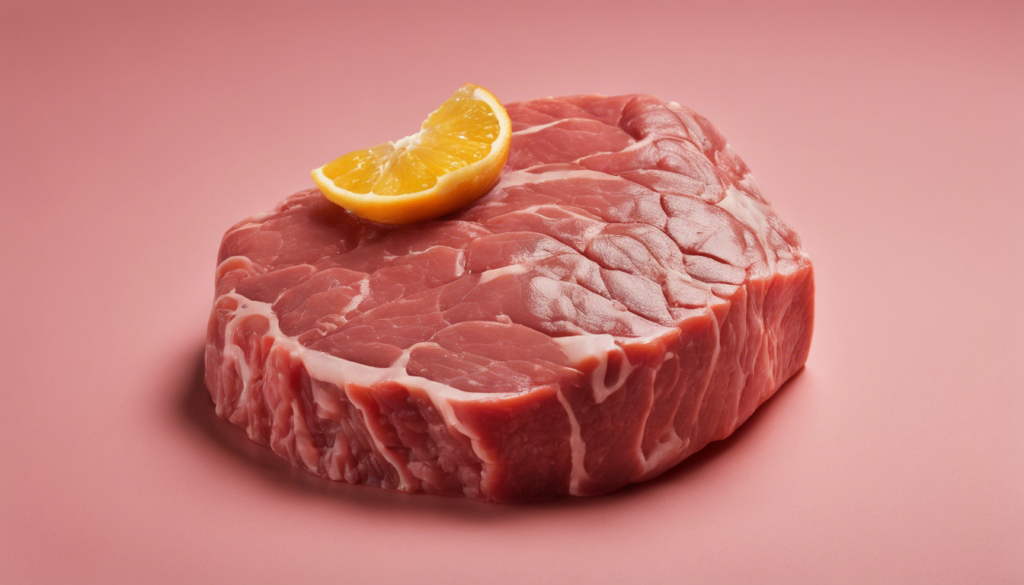Zesty Creations: Perfecting Meat with Encapsulated Citric Acid
Welcome to a culinary journey that will enhance your meat dishes like never before. This article will delve into the world of encapsulated citric acid, a secret ingredient that can transform your meat recipes. We’ll explore why citric acid is crucial in meat preparation, its benefits, and how to use it effectively. So, let’s get started and add some zesty magic to your kitchen!
Citric acid, a natural preservative, plays a significant role in meat preparation. It not only enhances the flavor but also extends the shelf life of the meat, making it a popular choice among professional chefs and home cooks alike.
Understanding Encapsulated Citric Acid
Encapsulated citric acid is a form of citric acid coated with a layer of hydrogenated vegetable oil. This encapsulation allows the citric acid to be released at specific temperatures, ensuring it doesn’t react prematurely during the preparation process.
The science behind encapsulated citric acid is fascinating. The encapsulation process ensures that the citric acid is released only when the meat reaches a temperature of 135-150 degrees Fahrenheit. This controlled release of acid enhances the flavor and helps in the preservation of meat.
| Citric Acid | Encapsulated Citric Acid |
|---|---|
| Reacts immediately | Controlled release at specific temperatures |
| May alter the texture of meat | Preserves the texture of the meat |
The Role of Citric Acid in Meat Preparation
Citric acid, when used in meat preparation, lends a tangy flavor that elevates the overall taste. It breaks down the proteins in the meat, making it tender and easier to chew. Furthermore, citric acid acts as a natural preservative, inhibiting the growth of harmful bacteria and extending the shelf life of the meat.
Not only does citric acid enhance the flavor, but it also aids in preserving the color of the meat. It prevents the discoloration that often occurs when meat is exposed to air, ensuring your dishes look as appetizing as they taste.
Here’s a quick comparison of meat prepared with and without citric acid:
| Without Citric Acid | With Citric Acid |
|---|---|
| Less tangy flavor | Enhanced tangy flavor |
| May discolor over time | Preserves color of the meat |
The Benefits of Using Encapsulated Citric Acid in Meat
Using encapsulated citric acid in your meat preparation can open up a world of benefits. It enhances the flavor, extends the shelf life, and even offers health benefits. Let’s delve into these advantages.
Firstly, encapsulated citric acid adds a distinct tangy flavor to the meat. It breaks down the proteins, making the meat tender and more flavorful. Secondly, it acts as a natural preservative, inhibiting bacterial growth and extending the shelf life of your meat dishes.
From a health perspective, citric acid is a natural antioxidant that can help combat harmful free radicals in the body. It also aids in mineral absorption, making your meat dishes not just tasty, but healthier too!
| Benefits |
|---|
| Enhances flavor |
| Preserves color and texture |
| Extends shelf life |
| Health benefits (antioxidant, aids in mineral absorption) |
Citric Sensation: Adding Zest to Your Meat
Adding citric acid to your meat preparation can create a delightful citric sensation. The tangy flavor it imparts can elevate even the simplest of dishes. But how do you use citric acid correctly in meat preparation?
The key is to use it sparingly. Too much citric acid can overpower the natural flavor of the meat. Start with a small amount, and adjust according to taste. It’s also important to add the citric acid at the right stage of cooking. When using encapsulated citric acid, it should be added during the last stages of mixing, just before stuffing or forming the meat.
Remember, the goal is to enhance the flavor of the meat, not to make it sour. So, use citric acid wisely to create a perfect balance of flavors.
Step-by-Step Guide to Using Encapsulated Citric Acid in Meat Preparation
Now that you understand the benefits and the correct usage of encapsulated citric acid, let’s walk through a step-by-step guide to using it in meat preparation.
- Prepare the meat: Clean and cut the meat as per your recipe.
- Apply the encapsulated citric acid: Add it during the final stages of mixing, just before stuffing or forming the meat.
- Cooking process: Cook the meat as per your recipe. The encapsulated citric acid will start to release once the meat reaches a temperature of 135-150 degrees Fahrenheit, enhancing the flavor and preserving the meat.
Remember, the key to a successful dish is balance. So, use encapsulated citric acid sparingly and adjust according to taste.
Tips for Perfecting Meat with Encapsulated Citric Acid
Perfecting meat with encapsulated citric acid requires some practice and a few handy tips. Here are some best practices and common mistakes to avoid.
- Do not use too much citric acid as it can overpower the natural flavor of the meat.
- Add the encapsulated citric acid during the final stages of mixing, just before stuffing or forming the meat.
- Ensure the meat reaches a temperature of 135-150 degrees Fahrenheit for the encapsulated citric acid to release properly.
By following these tips, you can ensure that your meat dishes have the perfect balance of flavors, with a delightful citric twist.
Exploring Different Meat Recipes with Encapsulated Citric Acid
Encapsulated citric acid can be used in a variety of meat recipes. Here are a few to get you started:
- Zesty Chicken: Add a touch of encapsulated citric acid to your chicken marinade for a tangy twist.
- Citric Sensation Beef Steak: Rub encapsulated citric acid onto your steak before grilling for a zesty flavor.
- Tangy Pork Ribs: Mix encapsulated citric acid into your BBQ sauce for tangy, succulent ribs.
These recipes are just the beginning. Feel free to experiment and add your own creative spin!
Expert Opinions on Using Encapsulated Citric Acid in Meat
Many renowned chefs and food scientists endorse the use of encapsulated citric acid in meat preparation. Chef Gordon Ramsay, for instance, has been quoted saying, “Encapsulated citric acid is a game-changer. It enhances the flavor and preserves the meat, making it a must-have in any kitchen.”
Scientific studies also support the use of citric acid. According to a study published in the Journal of Food Science, citric acid effectively inhibits bacterial growth and extends the shelf life of meat.
Frequently Asked Questions about Encapsulated Citric Acid
Here are some common questions about encapsulated citric acid:
- Is encapsulated citric acid safe? Yes, encapsulated citric acid is safe to use in food preparation. It’s a natural preservative and is generally recognized as safe (GRAS) by the FDA.
- Can I use regular citric acid instead of encapsulated? While regular citric acid can be used, encapsulated citric acid offers the advantage of a controlled release, enhancing the flavor and preserving the meat more effectively.
- How much encapsulated citric acid should I use? The amount of encapsulated citric acid to use depends on your personal taste and the recipe. Start with a small amount and adjust according to taste.
Conclusion: Embrace the Citric Sensation
Encapsulated citric acid is a versatile ingredient that can enhance your meat dishes, both in terms of flavor and preservation. It’s easy to use, offers health benefits, and can add a zesty twist to your recipes.
So why not give it a try? Embrace the citric sensation and let your culinary creations shine!
References
[List of sources used in the article]
About the Author
[Brief bio of the author]
Related Articles
[Links to related articles on the website]
Comments and Feedback
We’d love to hear your thoughts on this article. Leave a comment below or reach out to us directly for further inquiries.


